Facial Feminization Surgery (FFS) in Philippines
Search and Compare the Best Clinics and Doctors at the Lowest Prices for Facial Feminization Surgery (FFS) in Philippines

Find the best clinics for Facial Feminization Surgery (FFS) in Philippines
No pricing info available
Thailand offers the best prices Worldwide
Price: $ 1,945
From 1 verified reviews
toni de guzman, 29 November 2017
The place is tidy with a cozy ambiance. The consultation room is very relaxing, the space is not cramped, and the doctor is warm and accommodating. I had one session of Laser brightening peel on my face which I highly recommend! It lessens oiliness and breakouts and leaves a remarkable glow on the skin. Thumbs up for this procedure, It's a winner!
JMW Plastic Surgery, located in Alaminos, Pangasinan, Philippines offers patients Facial Feminization Surgery (FFS) procedures among its total of 90 available procedures, across 1 different specialties. Currently, there's no pricing information for Facial Feminization Surgery (FFS) procedures at JMW Plastic Surgery, as all prices are available on request only. All procedures and treatments are undertaken by the lead specialist at the Hospital, and they are accredited by PAPRAS - Philippine Association of Plastic, Reconstructive and Aesthetic Surgeons
- Home
- Philippines
Compare Before & After Photos of _procedure_photos.phpFacial Feminization Surgery (FFS)
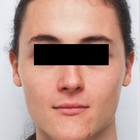
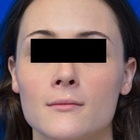
Front view
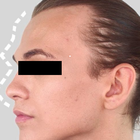
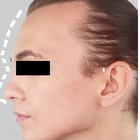
Half-side view
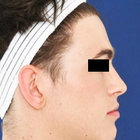
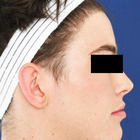
Full-side view
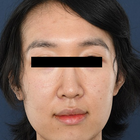
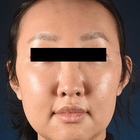
Front view
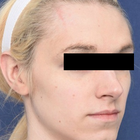
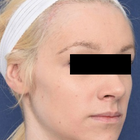
Half-side view
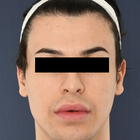
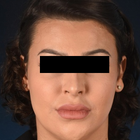
Front view
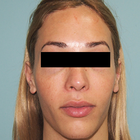
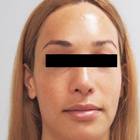
Front view
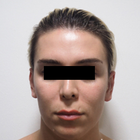

Front view
WHY US?
At Medijump, we're making medical easy. You can search, compare, discuss, and book your medical all in one place. We open the door to the best medical providers worldwide, saving you time and energy along the way, and it's all for FREE, no hidden fees, and no price markups guaranteed. So what are you waiting for?

Free

Best Price

Widest Selection

Risk-Free
What you need to know about Facial Feminization Surgery (FFS) in Philippines

Facial Feminization Surgery, often abbreviated as FFS, is an extensive surgical process designed to modify masculine facial characteristics into a more feminine appearance. The procedure comprises several surgeries including rhinoplasty, forehead recontouring, and jaw and chin modifications. FFS is frequently sought after by transgender women desiring to more authentically express their gender identity. Any potential patient is advised to consult with a licensed surgeon to personalize the surgical plan according to their specific needs and aspirations.
Facial Feminization Surgery (FFS) usually necessitates an exhaustive pre-procedure assessment. This involves a thorough review of the patient's medical history, a complete physical examination, a psychological evaluation, and possibly facial x-rays. The surgeon will also discuss the aesthetic objectives, benefits, risks, and potential complications of the surgery with the patient. A collaborative decision-making approach is used to ensure patient safety and contentment following the procedure.
In this before and after example, the patient underwent Rhinoplasty, Chin recontouring, Jaw reduction, Lip lift, and eyelid surgery (blepharoplasty). The photo is taken 4 months post-op.
What is the cost of Facial Feminization Surgery (FFS) in Philippines?
Various elements such as the surgical complexity, hospital stays, anesthesiologist costs, and surgeon's fees influence Facial Feminization Surgery (FFS) pricing in Philippines. On average, possible charges vary from $20,000 up to $50,000. A detailed price breakdown from your healthcare provider will provide an exact view of the cost details.
The value of the procedure does not necessarily need to compromise the quality and standards of the surgery. Gain clarity about what components are inclusive and exclusive in the overall cost to understand thoroughly what your payment encompasses. Insurance firms usually do not cover aesthetic procedures, hence comprehensive knowledge and prudent financial preparation will streamline the procedure and make the Facial Feminization Surgery (FFS) a valid investment in enhancing your self-perception and assurance.
What does a Facial Feminization Surgery (FFS) Procedure Involve?
Facial Feminization Surgery (FFS) entails a range of tailored techniques aimed at personal needs with a focus on feminizing and gently modifying the facial structure. These techniques may encompass forehead reshaping, adjustments to the jaw and chin, rhinoplasty, facelifts, and other unique enhancements. The rising trend in health and well-being-oriented medical research is mirrored in personalized surgery schemes, ensuring the outcomes are attuned to individuals.
Normally, a care center will execute an in-depth consultation process to comprehend your aesthetic aspirations and draft a surgical blueprint. This evaluation is essential in harnessing the maximum advantages from the Facial Feminization Surgery (FFS). Ensuring the health and safety of the patient, a pre-operative assessment, encompassing a review of physical health and mental well-being, is a crucial measure.
How Long Should I Stay in Philippines for a Facial Feminization Surgery (FFS) Procedure?
During the planning phase for Facial Feminization Surgery (FFS), considering the necessary time for the operation and subsequent recovery is vital, in order to ensure a seamless return to standard duties. The length of your Philippines visit is heavily influenced by the surgery’s intricacy, your personal health condition, and your recovery speed. Generally, a timeframe of one to two weeks is advised before getting back to everyday activities.
However, the precise timeline can differ considerably, with follow-up meetings commonly arranged during your stay. These are paramount for evaluating your progress and identifying any possible surgical complications. This window also presents a chance for practising respiratory exercises and other preventive health methods to expedite a seamless recovery. Adherence to all the instructions given by your surgeon during this term is critical, as this significantly influences the success rate of the Facial Feminization Surgery (FFS).
What's the Recovery Time for Facial Feminization Surgery (FFS) Procedures in Philippines?
Recovery from Facial Feminization Surgery (FFS) can differ among individuals, largely depending on the procedure's scope and the patient's overall health. Usually, patients require approximately six weeks of recuperation before they can engage in strenuous activities. During this time, individuals may experience swelling, bruising, and discomfort related to the surgery, but these symptoms typically diminish over time.
Getting plenty of rest, maintaining adequate hydration, and consuming a balanced diet can aid in accelerating recovery. It's vital to strictly follow the healthcare provider's advice regarding prescribed medicines, care of surgical wounds, and limitations on activities to prevent complications and promote healing. Keep in mind that health and well-being extend beyond the surgical procedure itself, so comprehensive aftercare is essential for successful outcomes.
What sort of Aftercare is Required for Facial Feminization Surgery (FFS) Procedures in Philippines?
Appropriate aftercare is a vital component of successful Facial Feminization Surgery (FFS) and significantly influences the recovery process. It may include prescribed medications, regular medical check-ups, custom-made nutrition plans, and effective weight management. The recovery phase could span several weeks, during which adequate rest is paramount for a seamless recuperation.
Patients are often advised by their surgeons to temporarily abstain from rigorous physical activities and to maintain a healthy lifestyle. The latter should incorporate balanced nutrition, staying hydrated, taking supplements, and ensuring proper sleep and mental health management. It's important to note that adherence to the prescribed aftercare plan and attendance at follow-up visits are key to tracking improvements and promptly addressing any potential complications.
What's the Success Rate of Facial Feminization Surgery (FFS) Procedures in Philippines?
Facial Feminization Surgery (FFS) is recognized as an extremely successful surgery that produces transformative and enduring outcomes. The success rate fluctuates depending on various factors, including the proficiency of the surgeon, the overall health of the patient, and the quality of care after the surgery. A majority of patients report high levels of satisfaction, citing increased self-confidence and an enhanced quality of life.
It's important to understand, however, that despite its high success rate, the procedure isn't without potential risks and complications. Complications like infections, scarring, and dissatisfaction with the aesthetic outcome are potential, though they are rare occurrences. Thorough pre-operative evaluations, skilled surgical hands, and comprehensive post-operative care significantly lessen these risks. Consequently, when selecting the most suitable protocol for your Facial Feminization Surgery (FFS), the guiding factors should be patient safety and satisfaction.
Check out this video for before and after images of FFS patients, you'll be amazed by some of the results made possible by this surgical procedure.
Are there Alternatives to Facial Feminization Surgery (FFS) Procedures in Philippines?
Bear in mind that each person's needs and preferences are distinct, and surgical interventions might not be the most suitable route for everyone. There are other alternatives available for those who might be more inclined towards non-surgical solutions. Aesthetic treatments like injectable fillers, Botox, and others can simulate some effects of the Facial Feminization Surgery (FFS) on a temporary basis. However, cosmetic treatments of this kind typically necessitate ongoing sessions to preserve the sought after result.
Furthermore, some individuals might prefer to engage in psychological or behavioral therapies that encourage self-acceptance and a positive body image. Such therapies address the mental health components of self-image and gender dysphoria, offering a different perspective to surgery. Having open-ended discussions with healthcare providers to explore all the available options prior to making a decision is strongly advised.
What Should You Expect Before and After the Facial Feminization Surgery (FFS)?
Prior to undertaking Facial Feminization Surgery (FFS), patients participate in an in-depth consultation process. During this stage, surgeons evaluate the individual's health status, expectations, and motivations to design a treatment program that best meets their needs. Various health screenings may be conducted to verify the patient's physical suitability for the operation.
Post-procedure, initial weeks may bring about some degree of discomfort, swelling, and bruising, which will progressively decrease. Adequate post-procedure care can significantly improve recovery and the ultimate outcome of your Facial Feminization Surgery (FFS). It's crucial to maintain regular communication with your surgeon and promptly report any unusual symptoms. The goal is to ensure a successful surgical procedure followed by a rapid and smooth recovery, guiding you towards a more self-assured version of yourself.
What is the Preoperative Preparation for Facial Feminization Surgery (FFS) in Philippines?
Preparing for Facial Feminization Surgery (FFS) entails addressing both physical and mental aspects to ensure successful surgery and recuperation. Patients undergo comprehensive evaluations involving various diagnostic tests to determine their overall health and suitability for the surgery. Moreover, patients may need to halt tobacco use, moderate alcohol consumption, and adjust certain medications—especially those affecting blood clotting—as these factors could disrupt both the surgical process and healing.
In addition, therapy sessions may be suggested to assist individuals in managing the psychological implications of such a life-changing procedure. A balanced diet is also pivotal in enhancing the body's healing capacity; adopting a healthy eating regimen, such as the Mediterranean diet, and considering suitable nutritional supplements can optimize preoperative preparation. Emphasizing mental wellbeing is another vital aspect of the journey, and implementing stress management strategies can prove beneficial during this period.
What are the Long-term Implications of Facial Feminization Surgery (FFS) in Philippines?
Facial Feminization Surgery (FFS) is often viewed as a long-term commitment that yields lasting and significant transformations. It significantly enhances self-image and self-confidence, leading to a substantial improvement in life quality. Though the changes induced by the surgery are generally unchanging, sustaining a consistent weight and adopting a healthy lifestyle are vital in preserving the results.
It's important to bear in mind that adjusting psychologically is an integral aspect of such a transformative experience. Individual or group therapies can aid in navigating these changes, fostering deep-seated growth and self-understanding following the Facial Feminization Surgery (FFS). Always remember, the success of a procedure goes beyond the physical alteration—it also involves overall wellbeing, health, and a positive life perspective.
Whilst the information presented here has been accurately sourced and verified by a medical professional for its accuracy, it is still advised to consult with your doctor before pursuing a medical treatment at one of the listed medical providers
No Time?
Tell us what you're looking for and we'll reachout to the top clinics all at once
Enquire Now

Popular Procedures in Philippines
Prices Start From $96

Prices Start From $111

Prices Start From $70

Prices Start From $16

Prices Start From $220

Prices Start From $28

Prices Start From $672

Prices Start From $275

Prices Start From $101

Prices Start From $556

Prices Start From $4,377

Recommended Medical Centers in Philippines for Facial Feminization Surgery (FFS)

- Interpreter services
- Translation service
- Religious facilities
- Medical records transfer
- Medical travel insurance
- Health insurance coordination
- TV in the room
- Safe in the room
- Phone in the room
- Private rooms for patients available

- Interpreter services
- Translation service
- Religious facilities
- Medical records transfer
- Medical travel insurance
- Health insurance coordination
- TV in the room
- Safe in the room
- Phone in the room
- Private rooms for patients available

- Interpreter services
- Translation service
- Religious facilities
- Medical records transfer
- Medical travel insurance
- Health insurance coordination
- TV in the room
- Safe in the room
- Phone in the room
- Private rooms for patients available

- Interpreter services
- Translation service
- Religious facilities
- Medical records transfer
- Medical travel insurance
- Health insurance coordination
- TV in the room
- Safe in the room
- Phone in the room
- Private rooms for patients available

- Interpreter services
- Translation service
- Religious facilities
- Medical records transfer
- Medical travel insurance
- Health insurance coordination
- TV in the room
- Safe in the room
- Phone in the room
- Private rooms for patients available

- Interpreter services
- Translation service
- Religious facilities
- Medical records transfer
- Medical travel insurance
- Health insurance coordination
- TV in the room
- Safe in the room
- Phone in the room
- Private rooms for patients available

- Interpreter services
- Translation service
- Religious facilities
- Medical records transfer
- Medical travel insurance
- Health insurance coordination
- TV in the room
- Safe in the room
- Phone in the room
- Private rooms for patients available

- Interpreter services
- Translation service
- Religious facilities
- Medical records transfer
- Medical travel insurance
- Health insurance coordination
- TV in the room
- Safe in the room
- Phone in the room
- Private rooms for patients available

- Interpreter services
- Translation service
- Religious facilities
- Medical records transfer
- Medical travel insurance
- Health insurance coordination
- TV in the room
- Safe in the room
- Phone in the room
- Private rooms for patients available

- Interpreter services
- Translation service
- Religious facilities
- Medical records transfer
- Medical travel insurance
- Health insurance coordination
- TV in the room
- Safe in the room
- Phone in the room
- Private rooms for patients available
Facial Feminization Surgery (FFS) in and around Philippines
About the Philippines
The Philippines is an island nation in the heart of Southeast Asia. It extends from the south of China to the northern tip of Borneo. It is also known as the ‘Pearl of the Orient Seas’, the Philippines is an archipelago of 7,107 islands. It comprises three main island groups, Luzon, Visayas, and Mindanao. Manila, the capital city, lies in the southwestern part of Luzon. Quezon City is the largest and most populous city in the country.
It is a prominent English-speaking country and was once a colony of Spain and the United States. It’s the most Westernised country in Asia. However, its culture is a mix of indigenous Malay culture and Spanish and American heritage.
Besides being one of the top tourist destinations, the Philippines is also an emerging medical tourism destination. It ranks in 8th position among popular medical tourism countries and more than 10,000 medical tourists visit the Philippines every year for various treatments. The following factors all contribute to the progress of medical tourism within the Philippines.
- Expert and board-certified medical professionals with international qualifications and training.
- Internationally-accredited hospitals with state-of-the-art medical equipment and modern facilities.
- Affordable costs compared to advanced nations
- Inexpensive accommodation
- The English language is widely-spoken making communication with the Medical team and patients easy.
- Tropical climate helps in the recovery and recuperation
The most common and popular procedures and treatments in the Philippines are cosmetic surgery, weight-loss surgery, dermatology, ophthalmology, and dentistry. As of late, people come here even for liver and kidney transplant surgeries, and cardiac surgeries due to the cost advantage it provides.
For example, a Breast Augmentation surgery that costs between $7,500-$8,500 in the US costs only between $3,000-$3,500 in the Philippines which would be a saving of about 58% to 60%. Also, a coronary artery bypass surgery costing $70,000-$133,000 in the US, will only cost between $11,500-$17,500 and would result in a saving of almost 83% to 86%. Even after adding travel and living expenses, it still makes it a, very good value for the patient to get medical care in the Philippines and several of the more popular Hospital and Clinics are located in Manila, and are St. Luke's Medical Center, Makati Medical Center, The Medical City and Asian Hospital and Medical Center
Popular Parts of the Philippines
The Philippines has a total land area of 116,000 square miles, with a large population of 107,791,044 million people. It has many pristine beaches, mountains, rainforests, islands, heritage towns, and monuments, With hotels, food, and transportation very affordable, it’s also a good budget tourism destination.
The following are some of the most beautiful places to visit in the Philippines:
- El Nido –is known for its white-sand beaches, clear turquoise waters, and coral reefs and is the gateway to the Bacuit archipelago which is a group of islands. The laid-back town of El Nido is a base for island-hopping tours, and kayaking trips to mountainous Cadlao Island, El Nido is situated on the northern edge of mainland Palawan.
- Coron – Is also situated in Palawan and is known for its warm waters, ideal for snorkeling, kayaking, and deep diving. The breathtaking Kayangan Lake, surrounded by karst walls is a visual treat. It is the cleanest lake in the Philippines.
- Tubbataha Reefs Natural Park –is also part of Palawan and is situated to the southeast, in the Sulu Sea. It’s home to countless coral reefs, and expansive breeds of fish, dolphins, sharks, and whales and It is a great water destination for divers.
- Banaue Rice Terraces – They lie within the mountainous region of the Cordilleras. The rice terraces are about 2,000 years old, a result of the labor of the predecessors of the region and They provide efficient space for people to farm on.
- Intramuros – The walled historical area of Manila contains the remains of a bygone era with its cobblestone streets and preserved remnants. Walking tours and carromata rides (two-wheeled box-like vehicles drawn by a single native pony) are popular here.
- Mount Mayon –is a 2,500-meter-tall active volcano. It’s famed for its perfect symmetry and accurate conical shape. You can enjoy the view from some distance or experience it at close quarters, by hiking for a couple of days.
- Hinatuan Enchanted River – Locals believe the river has mystical qualities. They feel fairies and Engkanto (other nature spirits) guard the enchanting blue-green river. The unknown source of clear saltwater is another mystery surrounding the river.
Boracay and Siargao are other popular tourist spots with their powdery white sand and water activities.
Weather and Climate in the Philippines
The Philippines has a tropical maritime climate. The general weather is hot and very humid. It experiences only three seasons:
- Summer Season – A very hot and dry summer season is between March and May.
- Wet Season – Rainy Season is between June and November when the southwest monsoon is most active. In this period, typhoons are common, especially during September and October.
- Dry Season – There is a cool and dry season between December and February, due to the cold winds brought in by the northeastern monsoon.
The average temperature of the Philippines ranges between 25°C and 32°C (78-90°F) with humidity of about 77%. High-altitude areas are much cooler, with night temperatures dropping to 20°C (68°F). The average annual temperature is around 26.6°C (79.9°F)
Getting Around in the Philippines
The Philippines is an island nation, most international travelers reach the country by air. The country has many international airports in various cities including Cebu, Davao, Manila, Kalibo, and Angeles.
Many airlines operate flights in and out of Manila to several destinations. Philippine Airlines, Cebu Pacific, and Air Asia are the national carriers of the Philippines. Singapore Airlines, Cathay Pacific, and many Middle Eastern airlines operate direct flights to Manila. The Southeast Asian cities of Bangkok and Ho Chi Minh City have wide connectivity to Manila and Cebu. You can reach Manila directly from London by flying Philippine Airlines. US travelers can fly via Japan to the Philippines.
Cebu Pacific, Tigerair Philippines, and PAL Express are some low-cost carriers that service domestic destinations in the country.
For transport within the Philippines, you have Jeepneys which are WWII- army jeeps converted into transport jeeps. They are cheap, open, and usually fully loaded with passengers which are normally cramped with 14 to 20 people sitting shoulder to shoulder depending on the length of the vehicle They operate as collective taxis, picking up and dropping passengers within cities.
Tourist Visas in the Philippines
Travelers from more than 150 countries that have diplomatic relations with the Philippines can enter the country without a tourist visa. EU, Australia, Japan, and the US are a few visa-exempt countries. In general, you can stay for up to 30 days, provided your passport is valid for at least six months after your arrival. Showing proof of onward and return journeys is compulsory.
Citizens of India, China, and Egypt are some of the countries that will need to get a visa in advance to enter the Philippines.
Additional Information
- Philippine Peso or Piso (PHP) is the official currency of the Philippines. Its subdivision is 100 centavos or centimos for a Peso. The current exchange rate for one US dollar is 51.99 PHP. You will be able to use US Dollars in Metro Manila and possibly in Cebu City. In other areas, it’s better to have pesos for exchange.
- You will find all major banks and plenty of ATMs everywhere. Master and Visa cards are accepted in most businesses.
- Tagalog or Filipino language is the main spoken language. English is also spoken and understood in the Philippines, due to the US influence during its colonization.
- Roman Catholicism is the major religion of the Philippines. 91% of the population are Christians and about 5.5% comprises of Islam religion.
- New Year’s Day, Araw ng Kagitingan, Independence Day, National Hero’s Day, Bonifacio Day, and Christmas are some of the important holidays in the Philippines.
Popular Searches
- Plastic Surgery in Thailand
- Dental Implants in Thailand
- Hair Transplant in Thailand
- Breast Augmentation Thailand
- Gastric Sleeve in Thailand
- Gender Reassignment Surgery in Thailand
- Laser Hair Removal in Bangkok
- Botox in Bangkok
- Dermatology in Bangkok
- Breast Augmentation in Bangkok
- Coolsculpting in Bangkok
- Veneers in Turkey
- Hair Transplant in Turkey
- Rhinoplasty in Turkey
- Stem Cell Therapy in Mexico
- Rhinoplasty in Mexico
- Liposuction in Mexico
- Coolsculpting in Tijuana
- Rhinoplasty in Korea
- Scar Removal in Korea
- Gastric Sleeve in Turkey
- Bone Marrow Transplant in India
- Invisalign in Malaysia
- Plastic Surgery in the Dominican Republic
- Tummy Tuck in the Dominican Republic
- Plastic and Cosmetic Surgery in Poland
- Rhinoplasty in Poland
- Hair Implant in Poland
- Dental Implants in Poland
- IVF in Turkey

